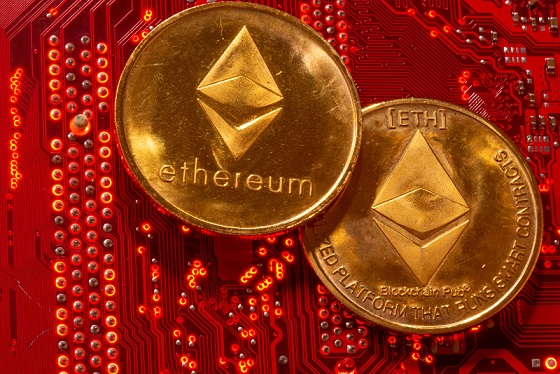Shiba Inu (SHIB): What's Happening? Is This Bitcoin (BTC) Resistance Unbreakable? Ethereum (ETH) On Verge of Fundamental Crisis?
U.Today - The price of Shiba Inu has moved very little or not at all over the past few weeks continuing to be stuck in a deadlock. SHIB has made multiple attempts to move outside of its current trading range but hasn't been able to build much momentum which has left investors and traders uneasy.
By examining the available market and on-chain data it is evident that SHIB is presently stuck in a small trading range with its price circling around $0.0000134. The 200-day and 100-day exponential moving averages (EMAs) coincide with the resistance levels at $0.00001813 and $0.00001597 respectively which are important to keep an eye on.
A more forceful upward trend may follow if SHIB is able to break above these levels which may indicate the end of this protracted period of stagnation. Support at $0.00001200 is still crucial on the downside. SHIB may enter a deeper correction if a decline occurs below this level which might lead to additional declines.
This might prolong the current impasse even more which would be especially worrisome for those looking for a bullish reversal. On-chain indicators point to a lack of significant buying interest which is consistent with the mixed overall market sentiment surrounding SHIB. Because traders are being cautious and waiting for a clear directional move before committing to new positions the trading volume has remained relatively low.
Bitcoin can't break throughThe 50-day exponential moving average on the chart which is $61,000 represents a significant resistance level that Bitcoin recently encountered. Four times in a row Bitcoin has failed to break through this barrier despite multiple attempts indicating that this resistance may be more strong than first thought. For traders and investors failing to break above $61,000 is worrisome because it could signal a period of inactivity for the price of Bitcoin.
A common technical indicator is the 50 EMA which can indicate a weakening upward momentum when the price finds it difficult to break above it. This puts Bitcoin in a situation where it might be stuck in a small trading range and unable to gain the momentum it needs to move higher. The wider market environment is making matters worse as there are indications of growing complexity and unpredictability in the situation.
A lack of strong buying interest and decreased trading volume are two possible reasons for the inability to break through this resistance level in the market.
Ethereum clearly underutilizedTransaction fees for Ethereum have fallen to their lowest point in five years raising the possibility of a fundamental crisis. The strength of the broader market and the network's economic model may be significantly impacted by this drop in fees.
According to the provided charts the supply of ETH has increased by 58,292 ETH in the last 30 days with an issuance rate of 939,000 ETH annually. The burn rate which is crucial for limiting supply and preserving scarcity has decreased to 229,000 ETH annually though. With a net annual supply growth of 0.59% Ethereums value proposition which has focused primarily on deflation since the switch to Ethereum 2 may be undermined.
Short-term user benefits from low transaction costs may be offset by diminished incentives for validators and a decline in the network's overall security and stability. The reward structure for validators becomes less appealing when fees are generated less frequently which could result in a decline in network participation. In a proof-of-stake system where validator incentives are essential for preserving network security this scenario is especially worrisome.
The fundamental elements of Ethereum's value such as network security and scarcity could be jeopardized if this trend carries on, potentially leading to a protracted period of stagnation or even decline. A crucial problem that must be resolved to stop Ethereum's market dominance from further eroding is the continuous drop in fees and burn rate.
Source: Investing.com
